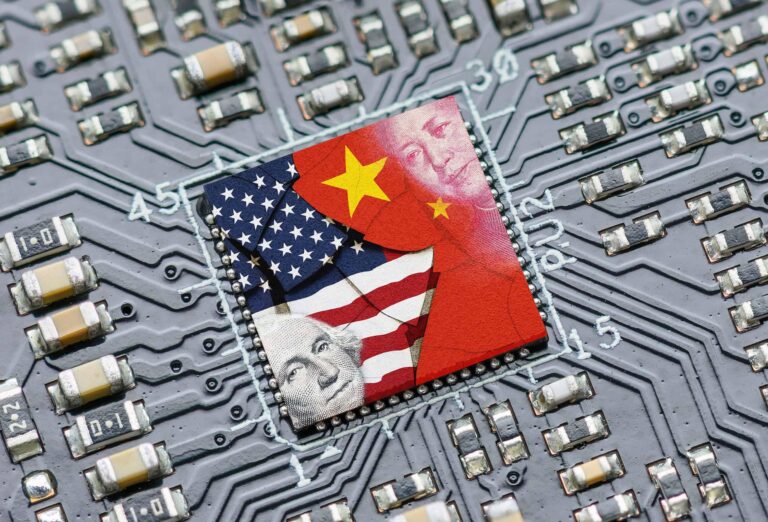China is rapidly closing the gap with the United States in the global race for artificial intelligence supremacy, challenging America’s long-held dominance in the technology sector. According to a recent report by The Wall Street Journal, Beijing’s aggressive investments, strategic policy initiatives, and expanding pool of AI talent are accelerating its advancements in the field. As Chinese firms and research institutions make significant strides, experts warn that the balance of power in AI innovation and economic influence could be shifting faster than anticipated, raising critical questions about the future of technology leadership worldwide.
China Advances Rapidly in AI Technology Narrowing Gap with United States
China’s momentum in artificial intelligence has surged notably in recent years, fueled by massive investments, government backing, and a flourishing tech ecosystem. The country is aggressively expanding its AI research footprint through enhanced funding for universities, cutting-edge startups, and state-led initiatives designed to accelerate innovation. Key players such as Baidu, Alibaba, and Tencent are integrating AI capabilities into everything from voice recognition to autonomous vehicles, pushing boundaries that were once dominated by Western firms.
Several factors are driving China’s rapid progress in AI:
- Data availability: Leveraging its vast population and looser data privacy regulations to train advanced machine learning systems.
- Government coordination: Implementing ambitious strategies like the Next Generation AI Development Plan with clear targets for global leadership by 2030.
- Talent cultivation: Focused efforts on STEM education producing a surge of AI researchers and engineers.
- International collaboration: Expanding partnerships across Asia and Europe to share resources, knowledge, and technologies.
| Metric | China | United States | ||||||||||||||||||||||||||||||||||||
|---|---|---|---|---|---|---|---|---|---|---|---|---|---|---|---|---|---|---|---|---|---|---|---|---|---|---|---|---|---|---|---|---|---|---|---|---|---|---|
| AI Research Papers Published (2023) | 36,000+ | 40,000+ | ||||||||||||||||||||||||||||||||||||
| AI Startups Funded | 1,200 | 1,500 |
| Investment Area | Estimated 2023 Spend (Billion USD) | Growth Rate (YoY) |
|---|---|---|
| AI Research & Development | 42 | 28% |
| AI-driven Healthcare | 15 | 35% |
| Smart Manufacturing | 22 | 31% |
| Autonomous Vehicles | 18 | 40% |
Urgent Policy Measures for the US to Regain Competitive Edge in the Global AI Arena
The US must undertake a comprehensive strategy to reclaim leadership in artificial intelligence, focusing sharply on increased federal investment and streamlined regulatory frameworks. Current funding levels lag behind China’s massive state-backed AI initiatives, handicapping American universities and startups alike. To reverse this trend, Congress should prioritize boosting R&D budgets tailored explicitly for AI innovations, while fostering public-private partnerships that accelerate technology commercialization. Simultaneously, a more agile regulatory environment is essential to enable rapid experimentation without compromising ethical standards, ensuring that American breakthroughs reach markets faster and with greater societal impact.
Beyond financing and regulation, workforce development stands as a critical pillar. The US must implement targeted programs to expand AI education and reskill workers, prioritizing diversity and inclusion to tap the widest pool of talent. Additionally, protecting supply chains for crucial AI hardware components, including advanced semiconductors, must become a national priority to avoid dependency risks. The following outlines key policy actions that require immediate implementation:
- Increase AI R&D funding by at least 50% within two years
- Establish AI innovation hubs in underserved regions
- Modernize immigration policies to attract and retain global AI talent
- Strengthen semiconductor supply chain resilience via incentives and partnerships
- Enhance AI ethics and safety frameworks with stakeholder collaboration
| Policy Area | Current US Status | Proposed Action |
|---|---|---|
| R&D Funding | $20B annually | Increase to $30B by 2026 |
| R&D Funding | $20B annually | Increase to $30B by 2026 |
| Innovation Hubs | Limited number, concentrated in major metros | Establish hubs in underserved regions nationwide |
| Immigration Policy | Restrictive and lengthy visa processes | Streamline visas to attract and retain AI talent |
| Supply Chain | Heavy reliance on foreign semiconductor suppliers | Incentivize domestic production and partnerships |
| Ethics & Safety | Fragmented guidelines with limited enforcement | Develop comprehensive frameworks with multi-stakeholder input |




